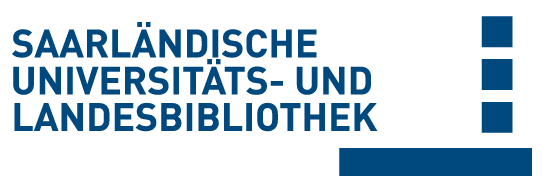Please use this identifier to cite or link to this item:
-no DOI; please use other URI| Title: | Multivariate Analyse von Einflussgrößen auf den Entlasszeitpunkt von n = 8.026 Patienten in einem ländlichen norddeutschen Krankenhaus |
| Author(s): | Dettmer, Marius |
| Language: | German |
| Year of Publication: | 2025 |
| Place of publication: | Homburg/Saar |
| DDC notations: | 500 Science 610 Medicine and health |
| Publikation type: | Dissertation |
| Abstract: | Multivariate Analyse der Entlasszeitpunkte in einem ländlichen Krankenhaus der Grund- und Regelversorgung in Norddeutschland
Bettenkapazitäten, steigender wirtschaftlicher Druck und der demografische Wandel führen zu Kapazitätsproblemen in der deutschen Krankenhauslandschaft. Hierbei kristallisiert sich der Entlassungsprozess immer mehr als Nadelöhr des Belegungsmanagementes heraus. Der Einfluss wurde gemessen als Entlasszeitpunkt am Entlasstag. Diese Analyse konnte eine Vielzahl patientenspezifischer aber auch organisationsspezifischer Faktoren erfassen, die sich in ihrer jeweiligen Einflussstärke jedoch erheblich unterscheiden. So konnte die behandelnde Fachabteilung als stärkster Regressor erkannt werden, während die Komplexität einer Erkrankung/Verletzung, gemessen als Patient Clinical Complexity Level, einen untergeordneten Einfluss aufweist, während Patienten mit einer Demenz einen früheren Entlasszeitpunkt aufweisen. Der Entlassungsprozess kann durch gezielte organisatorische Weisungen und eine Einführung eines strukturierten Entlassungsmanagementes der jeweiligen Fachabteilung maßgeblich beeinflusst werden und so das Belegungsmanagement effizienter gestalten.
Diese Arbeit beschäftigt sich damit, anhand einer multivariaten linearen Regressionsanalyse mögliche Faktoren im Entlassungsprozess zu erfassen und diese gleichzeitig zu quantifizieren. Multivariate analysis of discharges in a teaching hospital in Lower Saxony Bed capacities, increasing economic pressure and demographic change are leading to capacity problems in the German hospital landscape. In this context, the discharge process is increasingly emerging as the bottleneck of occupancy management. With the help of a multivariate linear regression analysis, this study attempts to capture possible factors of the discharge process and to quantify them at the same time. The influence was measured as discharge time on discharge day. Our analysis was able to capture a large number of patient-specific but also organisation-specific factors, which, however, differ largely in their respective influence. Thus, the treating department could be identified as the strongest regressor, while the complexity of an illness/injury, measured as Patient Clinical Complexity Level, has a subordinate influence. Interestingly patients with dementia have a better discharge before noon rate. The discharge process can be significantly influenced by targeted organisational instructions from the respective department and thus make occupancy management more efficient in order to avoid bottlenecks. |
| Link to this record: | urn:nbn:de:bsz:291--ds-465175 hdl:20.500.11880/40810 |
| Advisor: | Doll, Dietrich |
| Date of oral examination: | 31-Oct-2025 |
| Date of registration: | 21-Nov-2025 |
| Faculty: | M - Medizinische Fakultät |
| Department: | M - Chirurgie |
| Professorship: | M - Prof. Dr. Matthias Glanemann |
| Collections: | SciDok - Der Wissenschaftsserver der Universität des Saarlandes |
Files for this record:
| File | Description | Size | Format | |
|---|---|---|---|---|
| Diss_Dettmer_AbgabeÖFFENTLICHkorrekt.pdf | Dissertation mit ausgeblendeten Lebenslauf | 3,7 MB | Adobe PDF | View/Open |
Items in SciDok are protected by copyright, with all rights reserved, unless otherwise indicated.

